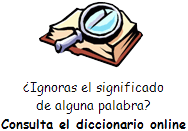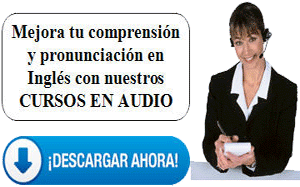Improve Your English by Using
Movements
If you are like most students, you probably sit still while learning a
new language.
However, sitting still may not always be the best way to learn.
English learners can improve their language skills through movement,
says Tamara Jones. She works at the English Language Center at Howard
Community College in Maryland.
Jones notes that English learners can improve their pronunciation by
studying with something really simple: a rubber band.
The relationship between movements and your brain
So, what is the relationship between physical movement and the brain?
The idea is that the brain and the body are joined together. This means
that one affects the other.
Many people are familiar with the idea that the brain tells the body to
move. And many people are familiar with the idea that repetition --
repeating an action over and over again -- helps your brain to remember.
However, some research, such as a study by
Morsella and Krauss, suggests that your body might help your brain to
find memories. Specifically, movements we make with our body, such as
hand gestures, may help us to remember and use the correct words.
This idea is part of the reason why experts on learning strategies,
which are ways to improve the learning process, suggest using movements.
One learning strategy approach, the Cognitive Academic Language Learning
Approach, or CALLA, calls the use of movements 'Using Your Kinesthetic
Sense.'
Beyond helping the brain to find memories, movements also aid in
learning, says Tamara Jones of Howard Community College.
“There's a lot of research that suggests what you do with your body, you
remember with your brain. And also, a lot of these physical movements
will encourage us in class or in life, when we are practicing on our own,
to repeat and repeat and repeat the word as we are doing the physical
movement, and this also helps us remember the words.”
Pronunciation and Word Stress
One of the biggest problems for English learners, Jones says, is
learning and remembering the correct word stress. Word stress means
saying some syllables in a word louder than other syllables.
Jones notes that word stress mistakes can happen in many ways:
“Sometimes they [students] can add an extra syllable, like instead of
saying chocolate, they could say chocolate-uh. Sometimes students cut
syllables. So, for example, instead of saying tofu, they might say tof.
And sometimes students stress the wrong syllable. So, for example,
instead of saying coffee, students might say caffee.”
The problem, Jones says, is that English speakers remember words
according to the stress pattern. If an English learner uses a different
stress pattern, then a native English speaker may have a hard time
understanding. This is because the stress pattern that the English
learner uses is different from the pattern that the native speaker
remembers.
One way English learners can solve this problem, Jones adds, is to learn
the correct stress pattern when they first learn a word.
English learners can find many free online dictionaries that give
pronunciation guidance. When you search for words, you will see the
phonetic spelling next to the main word.
So, if you wanted to learn the word 'telephone', you would go to the
dictionary and look at the pronunciation guide that is next to the word.
It looks like this:
telephone / noun
The phonetic spelling is listed between the word and the part of speech.
The apostrophe (') sign at the front of the phonetic spelling shows that
it is the part of the word that should be stressed.
Jones says English learners should pronounce the stressed syllable
longer and with higher tone or pitch. This action will make the vowel
sounds clearer in the stress syllable.
Using Movements to Improve Your Pronunciation
At this point, movement comes in.
One fun way, Jones says, to make sure that you are pronouncing the
stressed syllable clearly, and holding it longer, is by using a rubber
band:
“When students are learning new words, they can practice repeating these
words and pulling on the rubber band on the stressed syllable. So, for
example, a word like "telephone", telephone, the first syllable is the
stressed syllable. So as I'm saying telephone, I will pull on the rubber
band for 'tel', and then reduce the other syllables of 'ephone' so I'm
not saying them as clearly”
Doing this exercise, Jones says, will not only help you remember how the
word sounds, but also influence you to practice more.
What can you do?
You should be careful about how you use physical movements when learning
a new language. Choosing movements at random will probably not help you!
However, if you use a specific movement, such as pulling a rubber band,
for a specific purpose, such as improving your understanding of stressed
syllables, you may have success.
Remember: Pulling a rubber band will not give you superhuman memory or
enable you to pronounce every word perfectly. However, it can be a
useful, fun supplement for language study.
If you want to improve your pronunciation, try Jones' rubber band idea
by following these three steps:
- Choose a dictionary that has pronunciation guidance.
- Look up a new word in the dictionary to learn the stress pattern.
- Practice saying the word many times while pulling a rubber band.
Try using movements – such as pulling a rubber band -- in your language
studies, and let us know how they work for you! |
![]() ).
Utiliza el botón derecho del ratón y "guardar enlace" para descargar el
fichero a tu PC, tablet, Smartphone, etc.
).
Utiliza el botón derecho del ratón y "guardar enlace" para descargar el
fichero a tu PC, tablet, Smartphone, etc.![]() Escucha el audio
Escucha el audio


